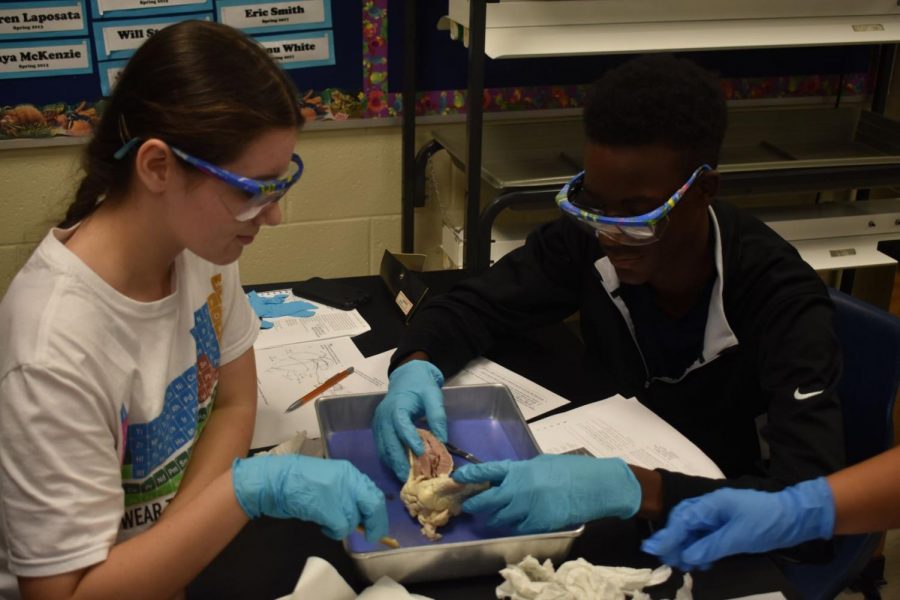Hopp’s anatomy students prove anything but sheepish in heart dissection lab
As part of the NC Anatomy class with teacher Julie Hopp, junior Spencer Williams and freshman Tatiana Sidorova examine and dissect a sheep’s heart to identify and label the different parts on a hand out. The objective? To develop a concrete understanding of the heart’s components and functions. “I learned how the heart works, and all the different paths,” Williams said.
September 19, 2018
Since the day of pioneering educational philosopher John Dewey, the concept of “learning by doing” has formed an integral part of American education. NC science teacher Julie Hopp clearly takes this philosophy to heart; her anatomy students dove wholeheartedly into a real-world exploration of their subject on Friday, September 14. As part of their unit on the cardiovascular system, the students undertook a decidedly unusual lab: dissecting and labeling a sheep heart.
“[Sheep hearts are] about the same size as ours, and they’re cheaper than some cow hearts,” Hopp said.
The organs thus served as a heartily acceptable analogue to the structure of the human cardiovascular system. After obtaining around twenty units from Carolina Biological, a company that specializes in various preserved materials, Hopp stored the hearts in liquid before distributing them to the students. Participants herded into lab groups of around four or five students and shared a heart to dissect.
“We’ve just opened it up, and we are now trying to identify different parts of the heart. We’re looking for the different chambers, valves, arteries, and veins,” sophomore Ben Schuller said.
The students then labelled each part of the heart on a lab worksheet, reinforcing their knowledge of the heart’s different components with real-world experience. The sheer intensity of the experience, though, made it no task for the faint of heart.
“It feels weird, and it smells horrible. It’s really weird, but it’s fun. I like it,” junior Baldwin Ndogo said.
Both distinctly unusual and unusually fascinating, the lab gave value and context to the students’ stock of knowledge, sharpening their skills in identifying heart components and giving a concrete form to previously abstract concepts.
“Every diagram that you look at is definitely different once you get hands-on with it,” Schuller said.
In a similar vein, Hopp hopes that her students will corral a deeper understanding of the heart from their experience.
“We spend about a week studying the heart on a piece of paper, and so the nice thing about this is that they can actually see what all those things look like when it’s a 3D model. It’s a nice opportunity for them to actually see anatomy in real life,” Hopp said.




